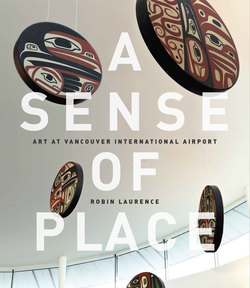Читать книгу A Sense of Place - Robin Laurence - Страница 14
На сайте Литреса книга снята с продажи.
Оглавлениеxv
other areas of the province, has also been installed throughout the International and Domestic Terminals.
Although European contact and trade with Northwest Coast First Nations stimulated art production in the eighteenth and early nineteenth centuries, the increasing colonial presence eventually proved disastrous. By the early twentieth century, disease, depopu-lation, missionizing and government policies (such as anti-potlatch laws and the imposition of the residential school system) had badly eroded traditional indigenous cultures. For a few decades, mask-making and large-scale carving were actively preserved in only a few communities and lay dormant in many others. In some cases, remnants of classical Northwest Coast design survived in the form of miniature poles, figures and canoes produced for the tourist market. The art was never completely extinguished, however, and from the 1950s onward it has seen an extra-ordinary resurgence, attracting national and international acclaim and finding an honoured place in non-Native collection and display, while also serving First Nations cere-monial needs and stimulating the recovery of other, more ephemeral cultural practices. New masks have been danced, new poles have been carved and raised, and the transfer or bestowal of family stories, names and privil-eges has been validated through potlatches.
The important decision to focus on aboriginal art from British Columbia in the development of YVR’s art program has meant commissioning and exhibiting major works from leading First Nations artists, many of whom have been active as teachers and mentors to younger generations. YVR has also supported the production of monumental art by emerging First Nations artists. For some, such commissions have resulted in the largest sculptures or instal-lations of their careers to date. The works created specifically for the International and Domestic Terminals reveal a deep respect for cultural traditions and, at the same time, a willingness to explore new and innovative forms, styles and materials. For those travel-ling through YVR, such art expresses the powerful presence and creativity of the first peoples of British Columbia, alerting us to the extraordinary and particular place in which we find ourselves.
1 Frank O’Neill, in an interview with the author, August 22, 2014. 2 Hilary Stewart, Looking at Totem Poles (Vancouver/Toronto: Douglas & McIntyre; Seattle: University of Washington Press, 1993), p. 12.3 Cheryl Shearar, Understanding Northwest Coast Art (Vancouver/Toronto: Douglas & McIntyre; Seattle: University of Washington Press, 2000), p. 9.
